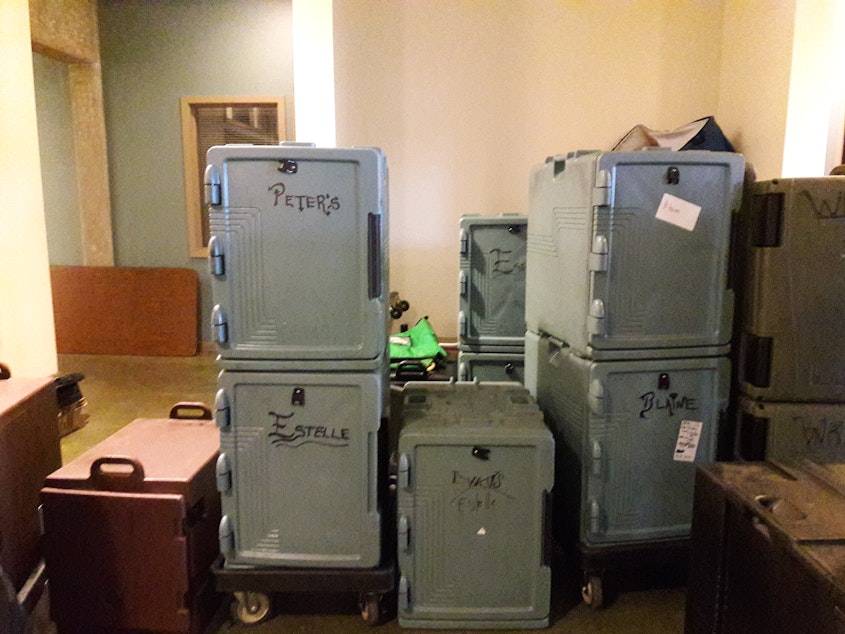Cooking for people living in Seattle shelters is like a 'Chopped' competition, these chefs say
If you think cooking for your family is challenging, try making 2,200 meals a day.
That’s what Operation Sack Lunch does. It makes hot meals for homeless people living in shelters across the Seattle area.
It all starts on the ground floor of Compass Center in Pioneer Square. Inside the tight kitchen, chefs Kellie Bell and Yoruba Pryor are putting together tonight’s dinner: chicken stew, plus a few other items to complete the meal.
Bell, Pryor, and their colleagues make the meals each day using surplus ingredients from supermarkets, restaurants and big companies with cafeterias.
“Our organization is like 'Chopped' every single day,” Taran Graham, logistics coordinator for the organization, said. Graham, who used to be one of the chefs in the kitchen, is referring to the reality TV cooking show, which requires chefs to put together meals using a basket of mystery ingredients.
“I’ll get phone calls first thing in the morning saying, 'Hey, can you tell me what kind of deliveries I’m expecting today?' and then they build their menus around those products.”
Sponsored
Graham shows me a computer map of their routes, which go as far north as Everett and as far south as Sumner and Fife.
“The biggest challenge is that whole city is under construction in some aspect and it has made travel very difficult," Graham said. "Not just to each location, but en route to each delivery location.”
It’s even worse on sporting event days.
Rescuing food is a big part of Graham’s job. Last year, the organization collected more than 900,000 pounds of food that would’ve otherwise been thrown out. This year, they might set a record.
“We’re already on par to clear one and a half million pounds of food," Graham said. "It’s a drop in the bucket in the amount of food that’s wasted throughout our food system.”
Sponsored
Blame it on consumers’ preference for perfection. “People are so preoccupied with the way their food looks that they might not purchase that tomato because it has a bruise,” said Graham.
Grocery stores end up tossing them even though they’re perfectly edible. Graham says it doesn’t always have to look amazing to be amazing.
“We are trying to get our foot in the door and our hands on that food so it can come back and be transformed into amazing meals.”

Sponsored
When it’s time to deliver the food, administrative assistant Abid Choudhury rolls out a special cart that keeps the stew warm. First stop is Peter’s Place, a night shelter in South Seattle. Choudhury brings in the food, partially lifts the cover and inserts a thermometer to check the stew’s temperature.
“Chicken has to be at least above 150 (degrees). So 150, it’s going up, that’s good chicken.”
Choudhury will make several more stops. His last delivery for the day is at Seattle City Hall, where the lobby is transformed into a homeless shelter at night.
At last count, more than 12,000 people in King County are homeless, a four percent increase from last year. Taran Graham says the realities of homelessness are complex. A big part of it is financial instability.
“A lot of us are in that situation where there’s not enough savings, not enough of a cushion,” he said. “It could be a bad investment, it could be a family disaster, a death in the family, the next thing you know you’ve got no money, you could be losing your house.”
Sponsored
Graham says providing shelter is important. Providing food is a basic need, too.




